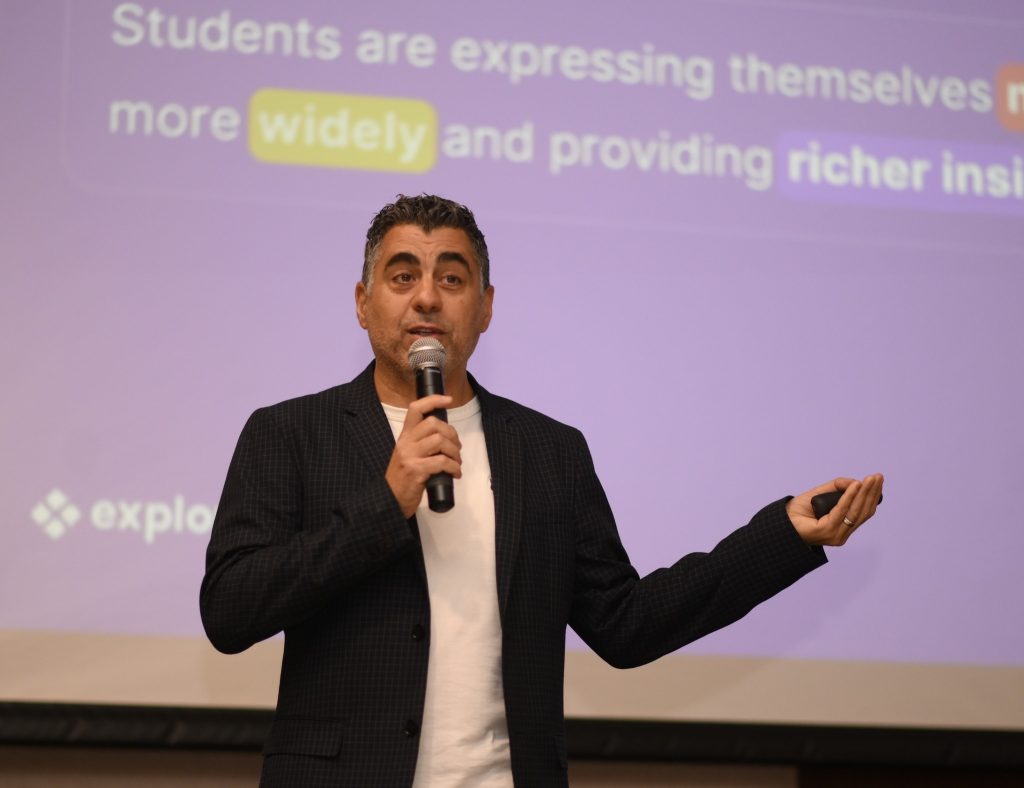To gauge employee sentiment, many companies invest in internal satisfaction surveys. Montreal-based company Explorance suggests expanding the scope by analyzing both “solicited” sources (traditional surveys) and “unsolicited” sources (such as social media posts or reviews on platforms like Glassdoor). Samer Saab, founder and CEO of Explorance, presented his approach during the conference “Leading the Way in Employee Listening and Development: What Metrics Will Transform Your HR Programs?”, held at the HR Tech Innovation Summit 2025.
The project has been in the works for a while. Since 2017, Explorance has been developing its AI-powered qualitative analysis tool, named MLY. Officially launched in 2023 and awarded Gold for AI in Education at the QS Reimagine Education Awards, the tool was updated to version 3.0 in early 2025. Today, MLY can analyze and categorize employee feedback—no matter the platform, be it an internal survey, a Slack channel, or a Glassdoor page.
“The goal is to be able to automatically analyze everything employees write,” said Samer Saab during his talk. “Organizations already have so much information—they can find answers to their questions without launching another internal survey.”
MLY’s algorithm has been trained to interpret emotions, themes, and tone in employee comments. A simple two-paragraph message can generate insights about an employee’s well-being or psychological safety. If a comment reaches a critical threshold, an alert is triggered for managers to pay attention to the situation.
Confidentiality is Key
However, the tool is not intended to be used on an individual basis. The idea is this: employee feedback sources are processed by the AI, which then provides HR best practice recommendations at a macro level. It’s similar to what the company EmoScience is doing—using AI-powered facial analysis to understand the emotional climate of a team.
Confidentiality is crucial, emphasizes the Explorance founder. “If an employee expresses a desire to leave and a manager shows up an hour later to talk about it, trust is broken. Ideally, we want to live in a world of recommendations. My personal dashboard tells me: keep doing this, stop doing that. I don’t care about the individual comments—I don’t want to read the backstage talk. What matters are the key insights from the analysis and the organizational strategies we’ll implement.”
Explorance specializes in measuring satisfaction—whether for employees or students (in educational contexts). The company collects data points throughout the entire journey, from school to retirement.
“In a listening strategy, it’s critical to start with what we want to know—not just with what’s coming in through surveys,” explains Saab.
In other words, organizational priorities must be set before MLY dives into employee comments and begins making recommendations.
“Is the organization focusing this year on performance, on development, or on strengthening its organizational capacity through competent leadership? We want to highlight key analytical points to guide HR strategies and decisions.”
The Importance of Qualitative Data
Ultimately, Samer Saab acknowledges that the strategy cannot rely solely on unsolicited content.
“If you realize you’re lacking information on a theme that’s important to you, then yes—you can run a survey or simply open a Slack channel to collect more qualitative feedback.”
He also recognizes that how companies conduct surveys affects the quality of the responses.
“Many organizations begin their surveys by asking about areas for improvement. It makes employees feel like their voice truly matters. That, in turn, reduces the likelihood of them leaving or damaging the employer brand,” he concludes.



 training.isarta.com
training.isarta.com 

